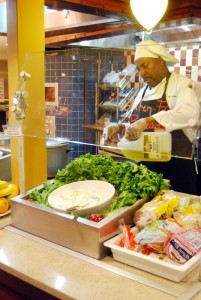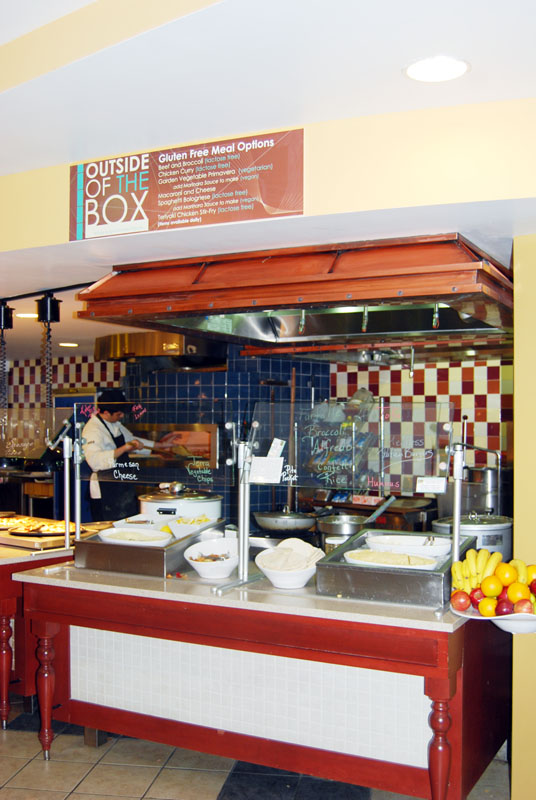On days when there are peanut butter cookies on the menu, Susan Johns ’13 can’t even go near the Sadler Center Dining Hall. Having a severe peanut allergy can make finding food on campus difficult, but the director of the Commons Dining Hall met privately with Johns her first week on campus freshman year and showed her around to the food stations. Two and a half years later, she is still on a meal plan thanks to the help of Dining Services, allergy food labels and some careful planning.
Whether they avoid ingredients for medical or personal reasons, students with special diets have received more attention at the College over the past few years.
At the beginning of this school year, Dining Services met with approximately 100 new students dealing with special diets in order to better accommodate their needs.

Approximately 3 percent of the College’s population is lactose or gluten intolerant, and Dining Services provides color-coded labels at food stations to ensure students know whether allergens can be found in their foods. Daily menus with food ingredients are posted online.
While the College has recently provided gluten-free options and a vegetarian station at the Caf, other Virginia colleges may provide more options for their students.
At Virginia Tech, all food is labeled if it contains one of the top eight listed allergens: gluten, milk, soybeans, eggs, fish, shellfish, tree nuts and peanuts. At the University of Virginia, an on-site nutritionist works with the dining staff to ensure allergen information is accessible to all students. James Madison University has permanent vegan and gluten-free stations.
“I never use the gluten-free stations here because I don’t want to wait 30 minutes for my food. Sometimes it’s weird things at the gluten-free station. I’d rather just go to the burger line and have the burger without the bun,” Pam Kotorac ’14 said. “There aren’t many breakfast options that are gluten-free. Also, it’s also hard at the Sadler to-go station because they don’t have any gluten-free options at all. But the people in Dining Services are very accommodating, so I don’t have too much of a problem.”
While the College does not have a large host of vegetarian options, Dining Services makes sure to make at least one “hot food” option along with the salad bar, cereal and a daily vegetarian soup. But, with 10 percent of the College population on a vegetarian or vegan diet, students often feel that their needs are not met.
“I don’t feel like I’m eating as well as I do at home,” vegetarian Isabelle Hardee ’15 said. “They don’t really have tofu options here, and even when they do it’s not cooked and it’s kind of tasteless. I try to eat vegan, and it’s really hard to get protein and eat in a healthy way. It’s really easy to eat fried, fatty foods where you would otherwise eat meat.”
Some students resort to adjusting their diets due to the lack of options that College dining offers.
“I was a vegetarian for four years, but my junior year I went carnivore because it was hard for me to get a good variety and enough protein. It’s hard to be a happy vegetarian at the College,” Jacob Saracco ’12 said.

